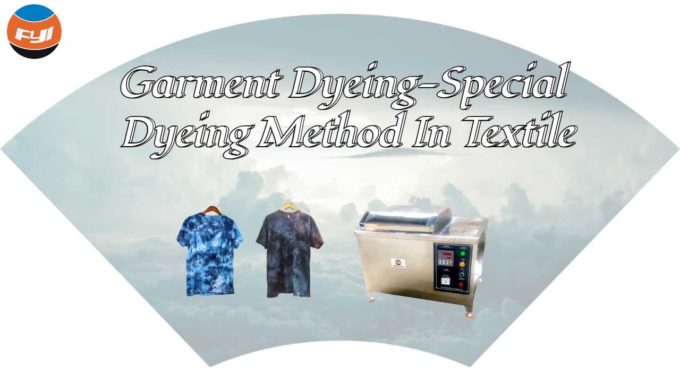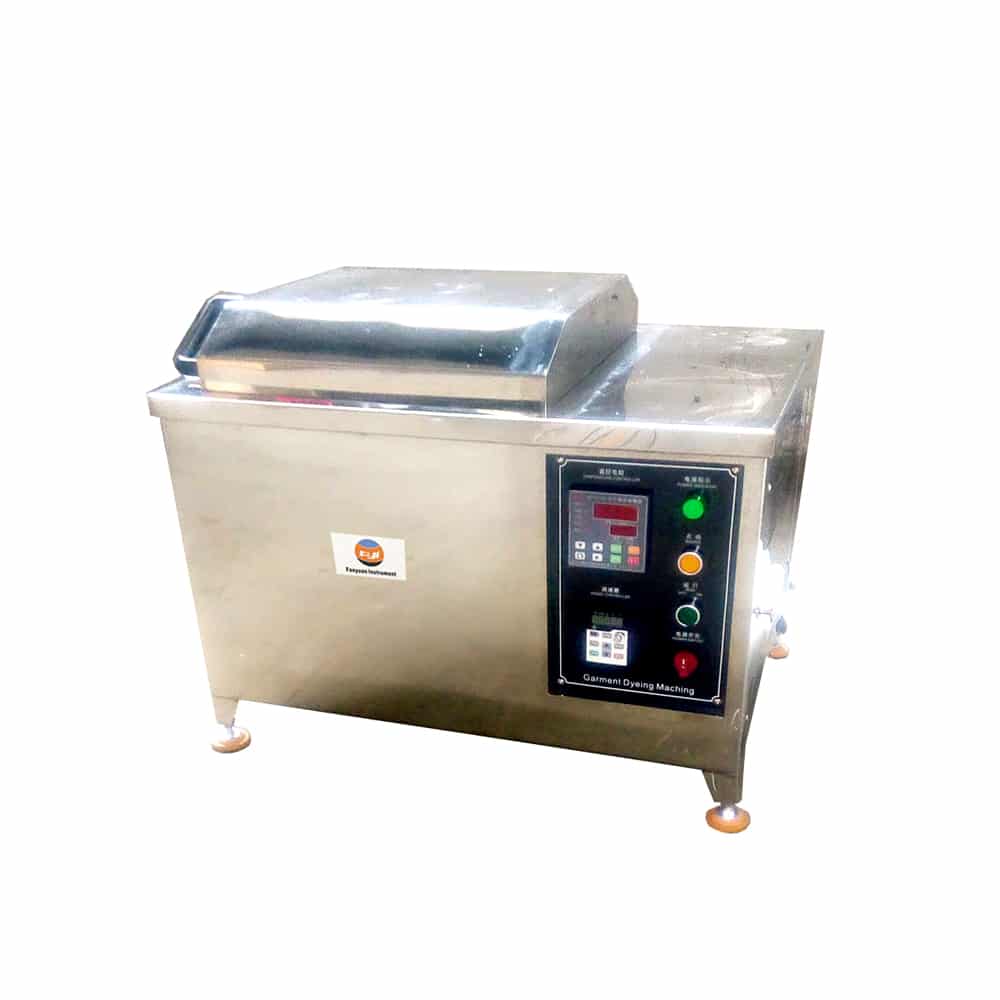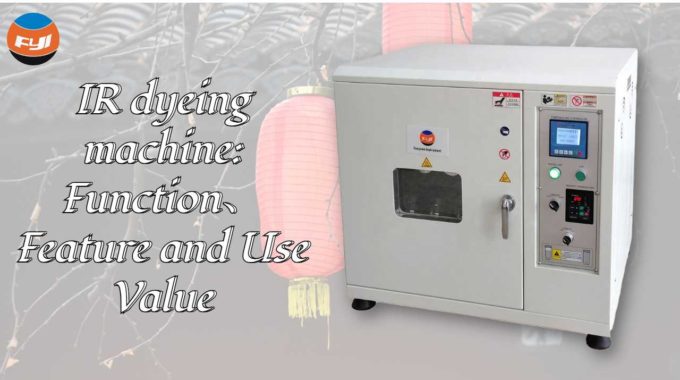
Garment Dyeing-Special Dyeing Method in Textile
Garment dyeing is a relatively special dyeing process for textiles and garments. Many people may not know much about this dyeing process. In the impression of most people, textile and clothing products are dyed in the fabric period, and garment dyeing is a dyeing process that breaks people’s cognitive limitations on textile dyeing.
Contents
What is garment dyeing
Garment dyeing means that dyeing the one not in the fabric type but in the garment type itself. The garment type mentioned above include socks, towels, sportswear, shirts, plush toys (without fillers), T-shirts, pants, bathrobes, handkerchiefs, bath mats, carpets, scarves, etc. The material of these garments can be wool, linen, silk and cotton of natural fibers. But most garments are made of cotton or a cotton-rich blends.
Garment dyeing imparts vibrant colors to garments. The clothes such as denim garments, tops, sportswear and casual clothing with garment dyeing can provide a distinctive special effect.
Garment dyeing method
Garment reactive dyeing method
This is a new generation of cost-effective garment dyeing. Whether it is dyed light or dark, it can show the uniqueness and advantages of the fabric. Without using sodium chloride, using Dyeprep 8-8-88 pre-dyeing auxiliaries as pre-dyeing pretreatment, the dye uptake rate can reach 95%. Other advantages include the following: good wash and sun fastness, good wet and dry rub fastness, reduced process time. This dyeing method is suitable for any cotton garments, including green fabrics, semi/full bleached fabrics and indigo denim garments.
Reactive dye molecules contain reactive groups, which can chemically react with functional groups in some fiber molecules to form covalent bonds. Reactive dyes have good wet fastness, bright color, complete chromatogram, good levelness, convenient dyeing and low price; it is one of the main dyes for dyeing and printing cellulose fiber textiles.However, the washing fastness of reactive dyes is still moderate, and the fastness to chlorine bleaching and sunlight is generally not as good as that of vat dyes.
Garment direct dyeing method
Direct dye is mostly used because it reacts directly with the fibre and it can be done on both hot and cool process. Wash fastness of those color is less that why is done when washing is done after dyeing.
Direct dyes get their name because they do not require mordant for cellulose fibers. Direct dyes are soluble in water and have the advantages of simple dyeing, low price and complete chromatograms. However, the wet fastness of direct dyes is low, and it often needs to be treated after fixing to meet the requirements of dyeing fastness. Direct dyes are currently widely used in rayon, middle and low-grade cotton fabrics, and garment dyeing.
Dyeing with natural plant dyes
It is the latest garment dyeing process. It is organically combined with natural plant dyes and natural fibers, which is more environmentally friendly and more natural. The process is basically similar to that of synthetic dyes. The difference is that in order to ensure the naturalness of the product, it is not easy to add other synthetic auxiliaries in the dyeing process.
Feature
Low cost
- Lower liquor ratio in garment dyeing requires lower water, steam and chemical consumption.
- Re-dying old clothes can reduce costs.
- Garment dyeing can be carried out for small batches of outfits.
- Desizing, scouring, bleaching, coloring, and adding finishing touches can all be carried out by a single garment dyeing machine.
Strong market competitiveness
Garment dyeing can make garments have a soft feel and powerful customization capabilities, making them more beautiful and fashionable.
Reduced Time to Produce and Supply
It takes less time to dye garment than fabric or yarn.
Environment friendly
The garment dyeing technology adopts special dyes that are environmentally friendly and non-polluting, without any irritation to the skin.
Difference Between Fabric Dyeing and Garment Dyeing
Fabric dyeing
In current textiles, fabric piece dyeing is the main dyeing method. In addition to dyeing the whole fabric with the same color, it can also be partially dyed, such as printing, sandwich dyeing, etc. Fabric dyeing can be done by open width or rope dyeing, or by dip dyeing, pad dyeing, gas phase transfer dyeing, etc.
Garment dyeing
Garment dyeing is to pre-treat the fabric first, and then dye it (or print) after it is made into a garment. Dip dyeing is generally used. Both woven and knitted fabrics can be garment dyed.
It is generally believed that the earlier the dyeing process is, the lower the production cost. After problems occur, it can be compensated in the subsequent process, but its market reaction speed is slow; High requirements for properties, dyes and processing technology.
Garment dyeing machine

Garment dyeing machine is special designed for lab use. It will save the cost before mass production. GD 350 is one of the machine in our company. The advantages of this machine compared with other traditional machines are significant, mainly:
- Versatility. It can realize multiple functions in one machine, such as pre-treatment, rinsing, stone grinding, dyeing, enzyme washing, dehydration and so on.
- During the dyeing and washing process. Different rotation speeds can be set according to different fibers (wool, silk, rayon, cellulose fibers and blended fabrics, etc.) and different types of dyeing and finishing.
- Higher dyeing quality. The high-speed dyeing system of the machine not only increases the penetration of dyes, but also guarantees higher reproducibility of production due to fully automatic computer operation, no defective products, and no need for repeated dyeing. The high-speed rotation of the machine allows the clothes to adhere to the drum to greatly reduce wear, entanglement and creases of the clothes.
- Smaller bath ratio. The bath ratio refers to the ratio of the number of liters of water per kilogram of clothing in the washing and dyeing process. This means that our machines save a lot of water, reducing the time it takes to fill and drain the machine and reducing waste water treatment costs. At the same time save steam and heating time and other energy sources, most importantly, greatly save the amount of dyes and chemicals and ensure uniformity.
- Less processing time. Loading/unloading laundry is easier. The low liquor ratio shortens the heating time. Also because of the low bath ratio the water inlet and drain times are shortened. The dehydration time is shorter and therefore the entire dyeing washing process is shortened.
- More environmental friendly. Save a lot of water resources, greatly reduce sewage discharge; save dyeing and chemical auxiliaries, save steam; make outstanding contributions to energy saving and consumption reduction.
- Labor saving. The labor intensity of operators is greatly reduced, and one employee can operate multiple machines at the same time, saving labor costs.
Comments are closed.



I’ll save this data for my future reference. Much thanks to you!
Wonderful illustrated information. I thank you about that. No doubt it will be very useful for my future projects. Would like to see some other posts on the same subject.
Hey There. I found your blog using msn. This is a very well written article. I’ll be sure to bookmark it and come back to read more of your useful info. Thanks for the post. I’ll definitely return.
Thanks for taking the time to discuss the knowledge with garment dyeing, I was impressed by your writing. Your writing is impressive. I want to write like you
This is a fabulous post I seen, it is genuinely what I expected to see look for in future you will continue subsequent to sharing such an extraordinary post.